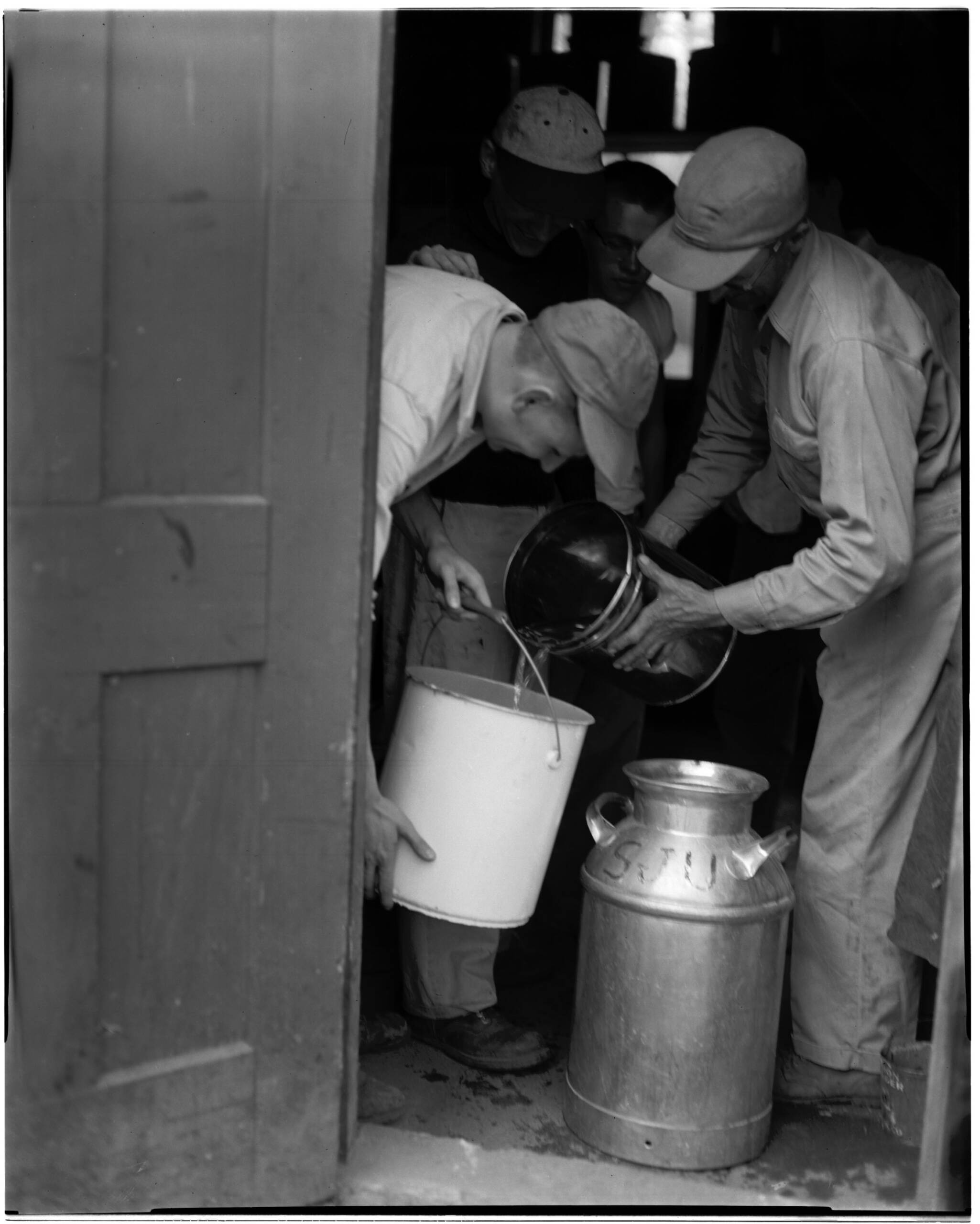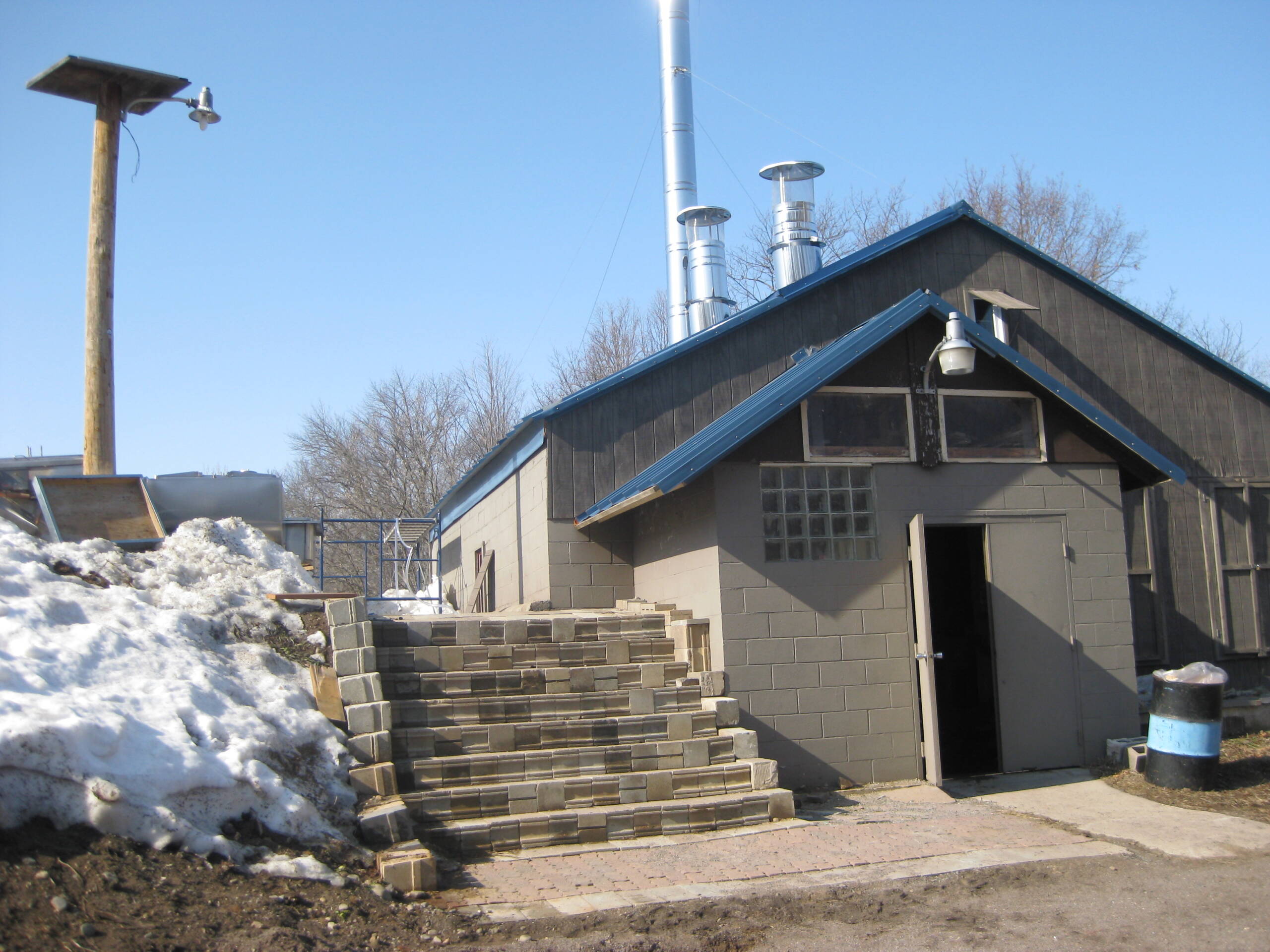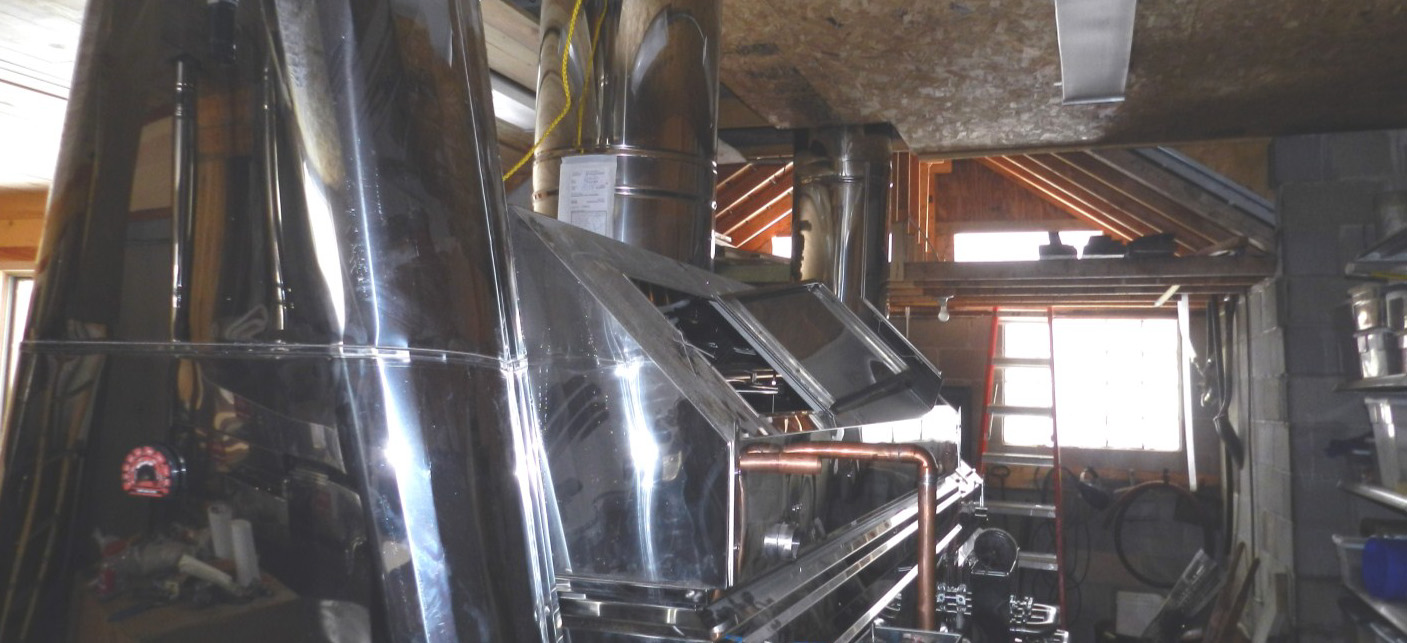 Home
Home
Sugar Shack



Students helping to store sap in the Sugar Shack, 1959 (left), Sugar Shack, 2013 (center), “Little Larry,” the Sugar Shack’s smaller evaporator, 2013 (right)
In response to sugar shortages and rationing during World War II, Saint John’s Abbey began its long tradition of maple syrup production. In the spring of 1942, Father Wendelin Luetmer, along with other members of the monastic community, began tapping 150 sugar maple trees, and yielded about 1440 gallons of sap. The sap was then taken to Brother Michael Keiss in the candle shop, where a cooking plant had been set up to process the sap. When maple syrup was produced, the chemistry department, under the direction of Father Matthew Keiss, found that the syrup had about a 2% sugar content. The success of the operation prompted the construction of a maple syrup distillery, which was completed in the fall of 1942, and was located just off of the original main road into campus, about a quarter of a mile east of the Abbey. It would come to be known as the Sugar Shack.
Over the following years, the amount of trees being tapped and syrup being produced increased rapidly with the Sugar Shack’s 382 cubic foot furnace and sixteen-foot evaporator keeping production moving. In 1970, however, this first Sugar Shack burned down under “suspicious circumstances.” The following year, a new shack was constructed where it currently stands, at the far edge of Radio Tower field and at the end of the area of sugar maple trees that are tapped for their sap, known as the “Sugar Bush.”
Since then, additions have been made to the Sugar Shack, including a small addition to the south side of the shack in 1996 for more efficient wood storage and use, as well as another addition to increase educational space, completed in 2008, that doubled the size of the building. In 2013, with the help of donors, purchased two new evaporators. “Big Burnie,” as it was named, is the production evaporator that is able to boil sap at a rate of 175-200 gallons per hour. The other smaller evaporator, “Little Larry,” was purchased mainly for educational purposes, and boils smaller amounts of sap throughout the season for the benefit of visitors and tour groups.
For more information about the Sugar Shack and maple syrup production at Saint John’s, click here.
Bibliography:
“Tree Tappers Trap Sap,” The Record, 16 April 1942, page 2.
“Maple Sugar Distilling,” The Record, 12 November 1942, page 4.
“Ross Investigates – Maple Syrup Industry On Campus,” The Record, 12 April 1945, page 1.
Roloff, OSB, Fr. Ronald. “Now It Is In Building,” Scriptorium, vol. 6, no. 1, Spring 1946, page 76.
Roche, Pat. “Maple Syrup Time Sap’s Running,” The Record, 23 April 1954, page 3.
“A Labor of Love!” SJU Alumni Magazine, vol. 6, no. 1, Spring 1966, page 22.
Schweitz, Paul. “Thesis: A Management Plan for the Conifer Plantations at St. John’s Collegeville, Minnesota.”
Armon, Pat. “St. John’s monks harvest the ‘Sugar Bush,’” The Record, 24 March 1988, page 4.
Saupe, Stephen. “The Maple Syrup ‘Crystal Ball,’” Sagatagan Seasons, Spring 2005, page 4.
Sittauer, Kevin. “Everything Old is New Again,” Sagatagan Seasons, v. 11, no. 3, Summer 2008, page 3.
Saupe, Stephen. “The Space Age Sugar Shack,” Sagatagan Seasons, vol. 16, no. 2, Spring 2013, page 5.
Sagatagan Seasons, vol. 17, no. 1, Winter 2014, page 5.
Raverty, OSB, Aaron. “Saint John’s Maple Syrup,” Abbey Banner, vol. 15, no. 1, Spring 2015, page 16.
Raverty, OSB, Aaron. “Saint John’s Fire Department,” Abbey Banner, vol. 18, no. 3, Winter 2018, page 15.